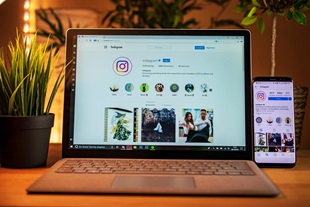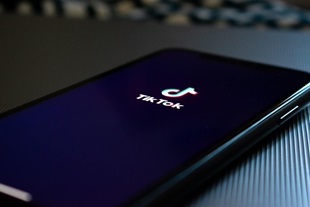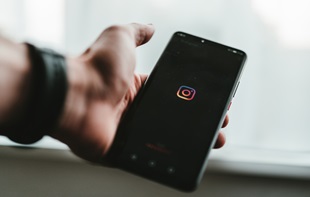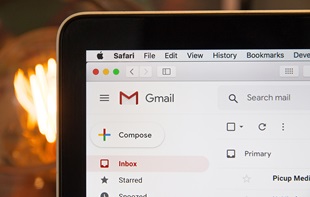What Does Influencer Marketing Look Like in 2023?
2022 was the year that influencer marketing became a prerequisite. An industry now worth around $21.1 billion, the channel is said to deliver 11 times higher ROI than traditional brand marketing. It’s an unavoidable line in your budget. But even for the most proactive of marketers, there was some initial scepticism. This is an inflated marketplace with a reputation not helped by ambiguity over what the term influencer actually means.
There are a few problems to tackle as it continues to evolve, but influencer marketing grew up a lot over the past year. So much so that 73% of luxury brands are now making use of it as part of their strategy. New strings to its bow include the availability of data that provides an accurate measure of ROI as well as efforts from Instagram to encourage transparency. The other side of this is a new appreciation from the industry as a whole for influencers as hardworking professionals. So, as a show of respect for the active contributions made by “influencers”, let’s move away from the term entirely and instead use “content creators”. What are the key considerations around influencer marketing for brands, agencies and content creators as we move into 2023? Below, we’ll take a look at influence marketing future predictions, as well as look at this strategy from all perspectives.
What is Influencer Marketing?
Influencer marketing is a type of social media marketing that involves endorsements and product placements from influencers, individuals who have a dedicated social following and are viewed as experts within their niche.
Influencers often have high levels of trust and engagement with their followers, and their endorsements can serve as a form of social proof for a brand's products or services.
Influencer marketing can take many forms, from sponsored posts and product reviews to collaborations and brand ambassadorships. The key element is that the influencer's endorsement or association with the brand is intended to influence their followers' buying decisions.
Influencer Marketing in 2023: The Stats
- 80% of businesses are dedicating some of their budget toward influencer marketing
- Marketers are predicted to collectively spend in excess of $4.5 billion on influencers this year
- 68% of brands intend to increase their influencer marketing budgets this year
- A massive 90% of marketers believe that influencer marketing is effective
- The worldwide influencer marketing market size has more than doubled in size since 2019
How to Create an Influencer Marketing Strategy
Creating an influencer marketing strategy involves several key steps:
- Define your goals - Start by defining what you want to achieve with your influencer marketing campaign. This could be increasing brand awareness, driving traffic to your website, or boosting sales.
- Identify your target audience - Know who you want to reach with your influencer marketing campaign. This will influence which influencers you choose to work with, as their followers should align with your target audience.
- Find the right influencers - Look for influencers who are relevant to your brand and have a following that matches your target audience. Consider their engagement rates, the quality of their content, and their reputation.
- Choose the right type of collaboration - Determine the type of collaboration that will best help you achieve your goals. This could be a sponsored post, a product review, a giveaway, or a longer-term brand ambassadorship.
- Measure your success - Decide on the metrics you will use to measure the success of your campaign. These could include engagement rates, website traffic, or sales attributable to the campaign.
Influencer Marketing from the Perspective of All Parties
For Agencies
- Numbers Talk
- Build Networks
- Don’t just consider social platforms
Part of the initial hesitation to embrace influencers as a cost-effective marketing tool was the difficulty of measuring ROI. There’s also a huge discrepancy between what each influencer charges for an individual post. Give your client a clear breakdown of costs and outline from the start of the campaign what you’ll be reporting on – remember they’re paying you to tell them what success looks like. If you’re looking for guidance on how to price influencer marketing, you can find some helpful insight here.
Build a portfolio of content creators in the same way that you’d build a network of freelancers. Having a network of people that you can draw from means that you’ll be able to offer your client a bespoke service – the right person for their brand. The other consideration here is the platform. Where is your client’s audience most active? Instagram? Snapchat? Youtube? Find out, and then select the content creator accordingly.
For Brands
- See your influencer as a collaborator
- Nail the Brief
- Explore new markets and communities
They got it just right, and there are lessons to be learned from their approach, even if you’re not quite Dior. Don’t talk about any of the influencers you’re working with as “talent”. These are people with unique insight into the community you’re targeting, and it’s totally invaluable to you. They hold a coveted position as an insider, and you’re missing a trick if you don’t invite them into the creative process as well. So, creative freedom is one thing. The other side of this is providing your contributors with a clear brief. You wouldn’t expect a designer to produce an artwork without one, and there’s no reason why this is any different. Give guidelines on the type of content you’re looking for, be clear about the objectives of the campaign (engagement, sales, brand awareness?), and brief the influencer on the tone of voice and messaging.
Influencer marketing is also an interesting way to find a voice with new audiences. Build in some A/B testing for your strategy. Find key influencers from specific communities and use it as an opportunity to judge which audience engages best with your brand’s message. Whalar’s Neil Waller talked at the Web Summit about how their campaign with Dior had helped the brand understand the nuanced voices of people in different countries. They gained insight into how to speak to markets like Malaysia and Russia.
For Content Creators
- Keep it real
- Stay transparent
- Know your audience
Stylist Live hosted an interesting panel discussing trust and transparency with three social influencers at a recent event. Body positivity influencer Megan Jayne Crabbe (find her nearly 1 million follower-strong Instagram here) spoke about working with Dove on a recent campaign. Crabbe talked about the importance of only working with brands whose messages and ideals celebrate body positivity, diversity, and inclusivity. Promoting products that you haven’t tried or brands that don’t align with your personal beliefs devalues your relationship with your audience. Another part of this is being totally upfront with your audience about which partnerships you’re being paid for. The FTC requires paid posts to be identified as ads using hashtags, but there aren’t any enforceable regulations. Fortunately, over the last year, Instagram has recognised the importance of transparency and rolled the Paid Partnership tag to selected content creators.
You’re not creating a closed, inaccessible platform for self-promotion here – you are building a community. You’re sharing ideas and spreading a message that you feel passionately about. Respond to DMs, comments, and give your followers advice. Share content from other people and brands involved without any kind of payoff.
How Influencer Marketing Will Look in 2023
This year, influencer marketing is likely to be characterised by several key influence marketing trends:
Rise of Micro and Nano Influencers
While mega-influencers and celebrities have traditionally dominated influencer marketing, businesses are increasingly working with micro and nano influencers (those with fewer than 10,000 followers). These influencers often have higher engagement rates and a more personal relationship with their followers.
Focus on Authenticity
Consumers are becoming more discerning and sceptical of influencer endorsements. As a result, authenticity is becoming more important. Influencers who share genuine experiences and recommendations and maintain transparency about sponsored content will be in high demand.
Long-Term Partnerships
Rather than one-off sponsored posts, businesses are likely to seek long-term partnerships with influencers. This can lead to more authentic endorsements and allows the influencer to become a trusted face of the brand.
Influencer-Generated Content
As businesses recognise the power of influencers not just as endorsers but also as content creators, the use of influencer-generated content is likely to increase. This can provide fresh, engaging content for a brand's marketing efforts.
Use of Data and Analytics
As influencer marketing matures, the use of data and analytics to select influencers, measure campaign success, and optimise strategies is likely to become more prevalent. This can lead to more effective and measurable influencer marketing campaigns.
Looking for more insight into digital marketing for the era of influence? We love to talk, and it’s YOU we want to talk to. Get in touch here to tell us about your project.
Subscribe To Us









































































.jpg?mw=310)








































































![The impact of online reviews on your business [Infographic]](/-/media/The-impact-of-online-reviews-on-your-business.jpg?mw=310)

![10 latest trends in digital marketing for beauty brands [Part.2]](/-/media/Appnova/Blog/ScreenShot20151026at1500471940x567/10-latest-trends-in-digital-marketing-for-beauty-brands-Part-2.jpg?mw=310)
![10 latest trends in beauty web design and digital marketing [Part.1]](/-/media/Appnova/BannerImages/18376519151_bbeaa6dafc_b-1/trends-in-beauty-web-design-and-digital-marketing/10-latest-trends-in-beauty-web-design-and-digital-marketing-Part1.jpg?mw=310)




























![15 crazy things people search on Google [Infographic]](/-/media/crazy-things-people-search-on-Google.png?mw=310)



![How to LOSE Twitter followers in 15 ways [Infographic]](/-/media/Appnova/Blog/08-internal-768x534.jpg?mw=310)
















0.Comments